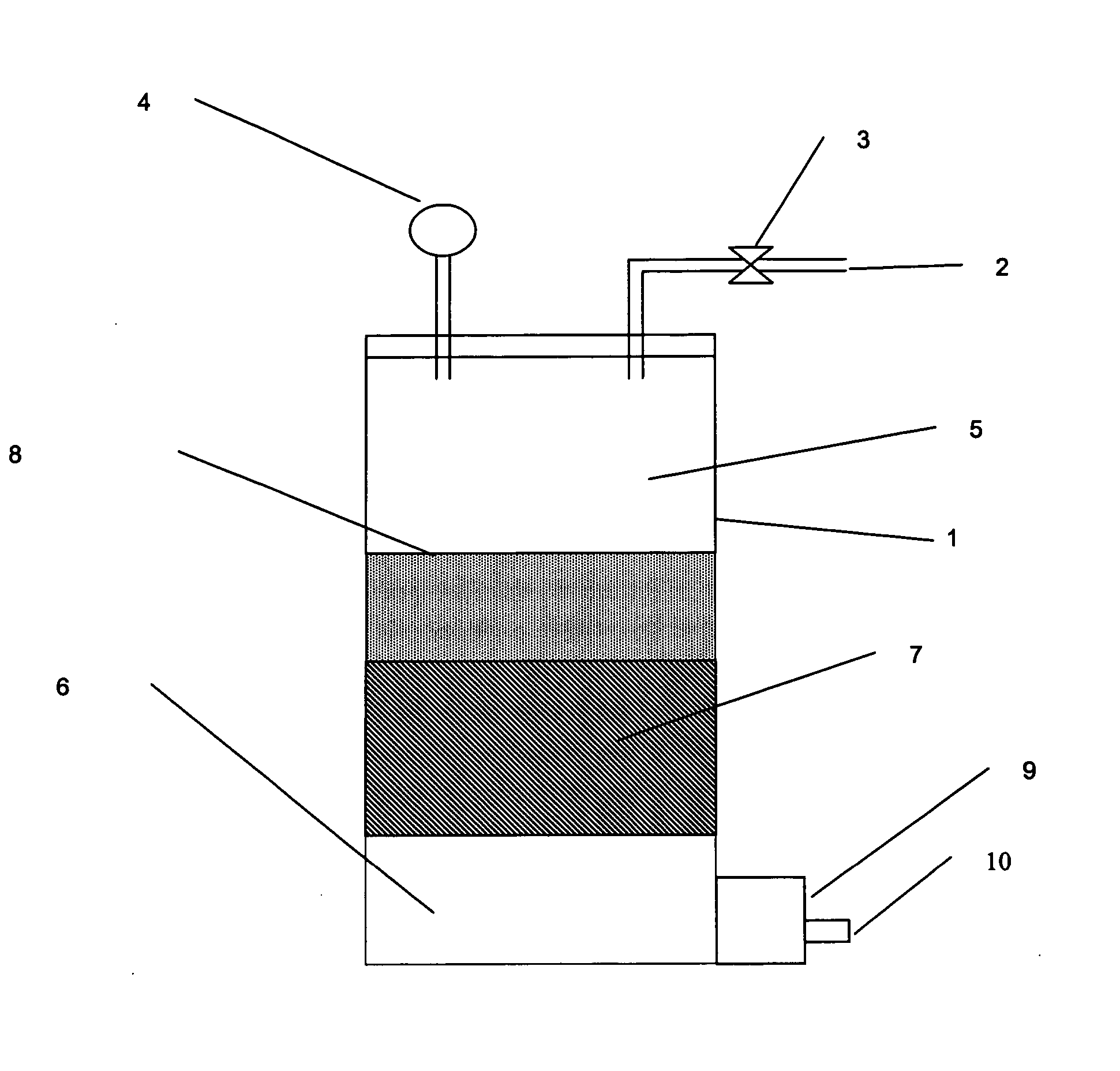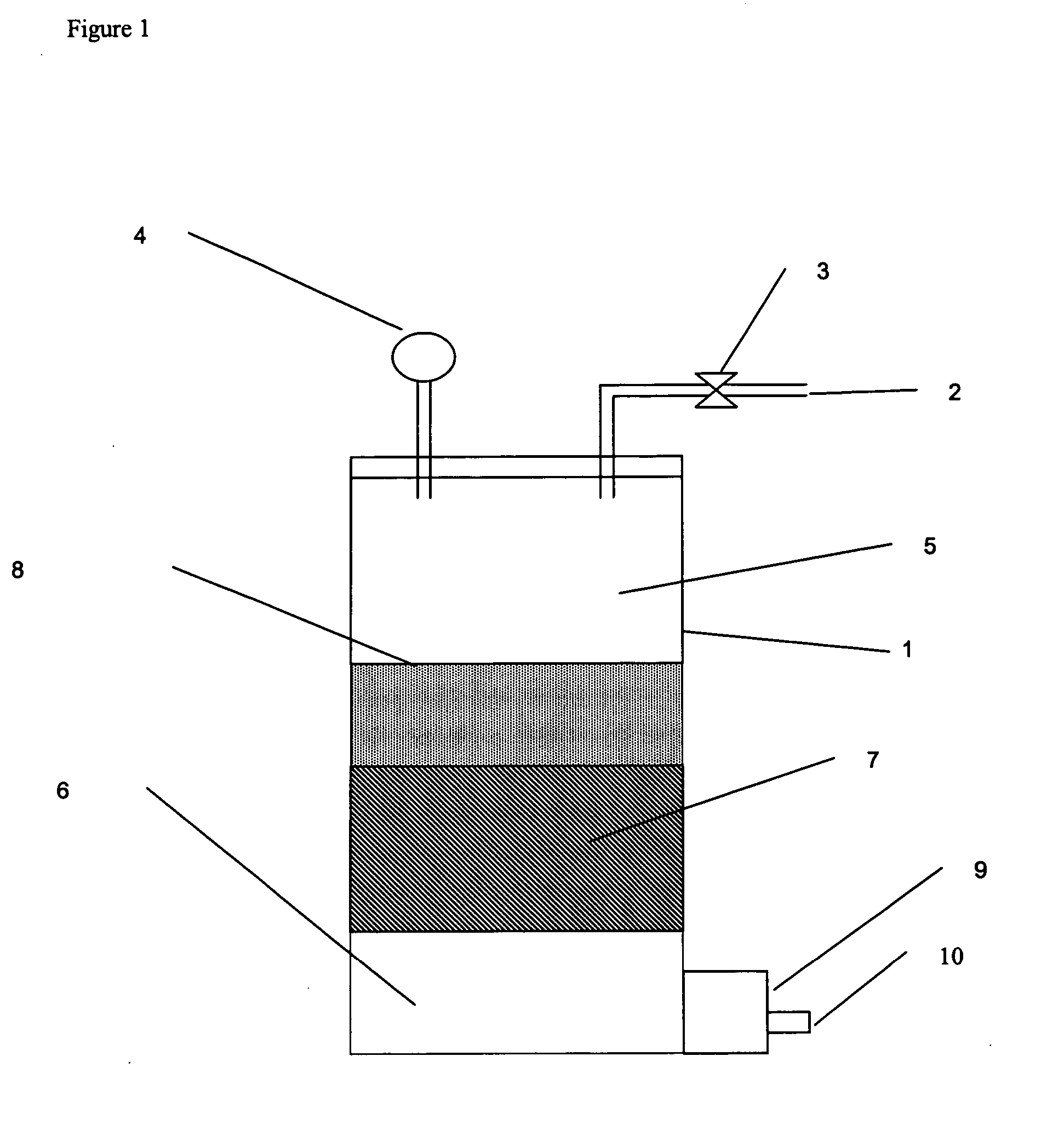Process for improved adhesive application
- Summary
- Abstract
- Description
- Claims
- Application Information
AI Technical Summary
Benefits of technology
Problems solved by technology
Method used
Image
Examples
example 1
[0046] Hot-melt adhesive containing superabsorbents (composition: 18% Estane T5410 from Noveon, 17% polyethylene glycol PEG-400 from Aldrich, 1% Irganox B225 from Ciba Geigy, 19% PM-17 from Savare and 45% Aquakeep 10SH-NF from Sumitomo) is melted between 135 and 155° C., in a bulk melter BM 200, available from Nordson, and pumped into a modified ITW Dynatech M25 adhesive tank with inlets for pumping air into it. The bulk melter was used to achieve faster melting of the adhesive. However it would be obvious to those skilled in the art that melting phase can be incorporated in the adhesive tank of the present invention, endowing the tank with a proper melting grid (see enclosed figure). The adhesive tank was heated to a temperature between 135 and 155° C., preferably at the same temperature of the bulk melter, under raised pressure of 0.5 bar above atmospheric pressure. The inert gas used for pressurizing is air, which is pumped into the adhesive tank by a conventional air compressor,...
example 2
[0048] The methodology used in this example is identical to the one used in Example 1, while the adhesive tank used was a Nordson Mx 4460 and the volumetric pump used was a Feinpruf, pumping 10 cm3 per revolution.
[0049] Test Method for Determining the Mass Flow Rate of Molten Adhesive
[0050] The principle of the test is to (a) pump a certain volume of molten adhesive, which is determined by the speed of rotation of the volumetric pumps and a certain time interval of pumping, (b) to collect this volume of pumped adhesive and (c) to determine its weight. This is done by pumping molten hot-melt adhesive of the type disclosed in example 1 out of the adhesive tank by the volumetric pumps, wherein a hose is fitted to the exit of the pumps guiding the pumped adhesive into a vessel for collection. The vessel with the adhesive is weighted after the time interval of pumping has ended. When using the weight of the vessel itself as tara the weight of the pumped adhesive can be determined easil...
PUM
 Login to View More
Login to View More Abstract
Description
Claims
Application Information
 Login to View More
Login to View More - R&D
- Intellectual Property
- Life Sciences
- Materials
- Tech Scout
- Unparalleled Data Quality
- Higher Quality Content
- 60% Fewer Hallucinations
Browse by: Latest US Patents, China's latest patents, Technical Efficacy Thesaurus, Application Domain, Technology Topic, Popular Technical Reports.
© 2025 PatSnap. All rights reserved.Legal|Privacy policy|Modern Slavery Act Transparency Statement|Sitemap|About US| Contact US: help@patsnap.com


